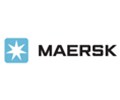Final countdown to sulphur 2020 begins

International Maritime Organisation’s (IMO) global 0.50 per cent sulphur cap regulation will come into effect on January 1, 2020. The limit for sulphur content in fuel oil used in ships operating outside the designated emission control areas will be reduced to 0.50 per cent m/m (mass by mass) from the current 3.50 per cent m/m, which has been in effect since 2012.
According to IMO, this new regulation will significantly reduce the amount of sulphur oxides emanating from ships and should have major health and environmental benefits for the world, particularly for people living close to ports and coasts.
A study on the human health impacts of sulphur oxide (SOx) emissions from ships, submitted to IMO’s Marine Environment Protection Committee (MEPC) in 2016 by Finland, estimated that by not reducing the SOx limit for ships from 2020, the air pollution from ships would contribute to more than 570,000 additional premature deaths worldwide between 2020 and 2025.
Is the industry ready?
While the new regulation is projected to have far reaching consequences on the environment, it is also set to impact the global economy, requiring companies in commercial shipping, bunkering and refining industries to implement significant operational changes.
Johnny Stewart, Principal Analyst EMEARC, Wood Mackenzie, a leading research and consultancy firm, tells GN Focus, “IMO’s upcoming sulphur cap will cause a major shake-up in the fuel mix used by the shipping industry. “The new legislation not only affects the end-user shipping community but also the supply side including refiners, storage and blending companies, and traders.”
Shipowners would need to adopt one or a combination of solutions to achieve compliance. They could install scrubber technology and continue to use high sulfur fuel oil (HSFO), or switch to either a lower sulfur complaint fuel or to alternative fuel sources such as LNG.
While shipowners have started taking measures to adhere to the cap, the industry grapples with questions and uncertainties, ranging from the availability of compliant fuel to how the sector could stay commercially sustainable in the long term.
MSC Mediterranean Shipping Company, one of the leading global transportation and logistics companies, has been preparing for several years for the upcoming change in the IMO’s low-sulphur fuel cap. Giles Broom, Global PR & Internal Communications Manager, MSC Mediterranean Shipping Company, tells GN Focus, “MSC expects to use a large quantity of compliant, low-sulphur fuel and has also invested in exhaust-gas cleaning systems for a significant portion of its fleet to maintain services across 200 trade routes worldwide beyond the IMO’s January 1, 2020 threshold.”
Another leading global liner shipping company, Hapag-Lloyd – with 235 modern ships and 398 offices in 128 countries – expects the new regulation to have a major financial impact on the shipping industry. “It’s a very good decision which will help to make our industry greener. Hapag-Lloyd expects additional costs per year of about $1 billion (Dh 3.6billiom),” says Nils Haupt, Senior Director, Corporate Communications, Hapag-Lloyd.
“We are currently converting a 15,000 TEU ship to LNG, which will be done in the second or third quarter of 2020. Additionally, we will have our Hamburg Express Class ships — 10 vessels of 13,200 TEU each — equipped with exhaust cleaning systems (scrubbers),” says Haupt.
Will the 0.50 per cent sulphur cap lead to a significant increase in freight rates in shipping?
“We expect freight rates to increase due to IMO implementation as the majority of shippers will have to switch from using cheaper HSFO to a lower sulfur more expensive fuel source,” says Steward, adding, “Those deciding to utilise scrubbing technology will have to swallow the upfront CAPEX installation cost.”
The question remains whether ship operators and owners globally will be able meet the deadline. “We expect around 90 per cent compliance in 2020, while we do not expect full compliance until 2025,” says Stewart.
Major preparations need to be made by the global vessel fleet prior to switching to compliant fuels, requiring a much more proactive approach to bunker fuel management. “It is recommended that all vessels develop a Ship Implementation Plan, covering issues such as fuel oil system modifications and tank cleaning, fuel oil capacity and segregation capability, and a fuel oil changeover plan,” says Stewart.
“Full compliance will be achieved by 2025 as sufficient compliant fuels become available in all ports globally and scrubber penetration increases.”
Switchover challenges
Johnny Stewart, Principal Analyst EMEARC, Wood Mackenzie, looks at some of the key issues that may concern the shipping industry
Fuel tank cleaning
The cleaning of fuel tanks will generally be required for all tanks previously using HSFO that are switching to low sulphur fuels, but this will be a major undertaking, taking several weeks to complete. However, vessel owners will be reluctant to clean fuel tanks if there is continued uncertainty regarding the availability of low sulphur fuels at specific bunkering ports, compounding the “wait and see” approach to implementation.
Fuel compatibility
The compatibility of VLSFO fuels remains a key concern for many shippers. While VLSFO fuels will be covered by the ISO 8127 standard, many of these new fuels may not be compatible, depending on their paraffinic and aromatic content.
In addition, switching to MGO may present some operational issues for vessels, due to its much lower viscosity compared to fuel oil.
Scrubber challenges
Due to the recent strong uptick in scrubber orders, some bottlenecks are developing in relation to the installation of scrubber systems. However, this is mainly related to specialist areas such as 3D laser scanning of a vessel prior to retrofitting, or the availability of the very high quality steel used in scrubber manufacturing, rather than dry docking capacity.
Key bunkering hubs, Singapore, Antwerp and Fujairah have now banned open loop scrubbers, as well as other ports in India, China, Europe and the US. China has also restricted the use of open loop systems in coastal waters with high levels of marine pollution. The European Union Water Framework Directive will also restrict the use of open loop scrubbers if water quality starts to fall below agreed levels. While most scrubber systems are open loop, the focus has shifted to hybrid-ready systems, which can have a closed loop system installed at a later date.
Fine enforcement
The IMO is not an enforcement body, so it is up to individual member states to enforce the regulation. Fines and penalties will vary between member states and there is no consistency between different countries in terms of the scale of potential fines. The enforcement regime was made more robust with the adoption of the carriage ban of HSFO, which will be in place from March 2020 onwards. As a result, port states will be able to prosecute vessels that are suspected of using HSFO in international waters, rather than just reporting their concerns to the respective flag state.
Source: Gulfnews

 Hellenic Shipping News Worldwide Hellenic Shipping News Worldwide, Online Daily Newspaper on Hellenic and International Shipping
Hellenic Shipping News Worldwide Hellenic Shipping News Worldwide, Online Daily Newspaper on Hellenic and International Shipping





















 PG-Software
PG-Software